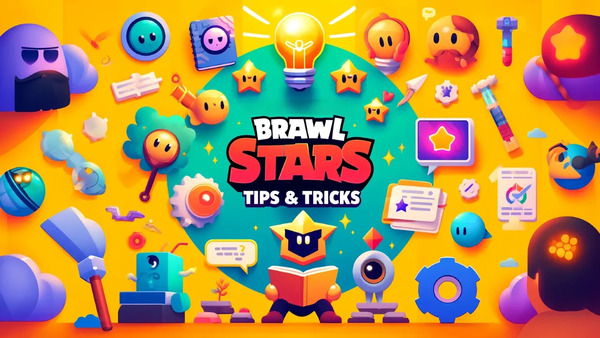Since its debut in 2003, Call of Duty has grown into one of the most influential first-person shooter (FPS) franchises in gaming history. With its cinematic set pieces, immersive storytelling, and innovative multiplayer experiences, the series has captivated players across generations. In this article, we'll explore the Call of Duty timeline, dissect its gameplay innovations, highlight its cultural impact, and reflect on its enduring legacy. Each section is structured chronologically and thematically, providing both historical context and detailed analysis from a human expert’s perspective.
1. Origins: Call of Duty (2003)
Historical Context
At its release in October 2003, Call of Duty brought a new level of authenticity to World War II shooters. Developed by Infinity Ward, the game emphasized realism, coordination, and theatrical missions—removing traditional HUD elements to enhance immersion. This marked a departure from earlier titles like Medal of Honor, setting a new standard.
Gameplay Innovations
-
Dynamic squad behavior: Soldiers would react dynamically to battlefield conditions, flanking enemies, calling for air support, and providing covering fire.
-
Cinematic pacing: The narrative-driven campaign featured scripted events like tanks rolling over roads and flamethrower charges.
-
Call of Duty effectively blurred the lines between gaming and cinema.
2. Modernizing WWII: CoD 2 (2005)
Enhanced Realism
Released in October 2005, Call of Duty 2 increased visual fidelity, AI responsiveness, and mission variety. Its squad mechanics were more fluid, supporting multiple viewpoints and dynamic objective changes, deepening tactical gameplay.
Multiplayer Breakthroughs
-
Introduced a perks system, rewarding strategic play with gameplay-modifying rewards.
-
Improved competitive modes (e.g., Team Deathmatch and Free-for-All) helped forge the esports and LAN party cultures that accompany the franchise today.
3. The Turning Point: Modern Warfare (2007)
A New Era
Modern Warfare (2007) redefined what a modern combat shooter could be. Set in a near-future geopolitical conflict, it offered intense, cinematic storytelling with memorable missions like "All Ghillied Up" and “Charlie Don’t Surf.”
Multiplayer Revolution
-
Killstreak system: Rewards for killstreaks (e.g., UAVs, airstrikes) incentivized aggressive, coordinated play.
-
Persistent loadouts and leveling: Extended player investment and progression.
-
These systems transformed multiplayer experiences and inspired countless imitators.
4. Sequels and Spin-offs: MW2, MW3, Black Ops Era (2009–2011)
Modern Warfare 2 (2009)
-
Expanded upon its predecessor with more varied settings, including Rio de Janeiro and Afghanistan.
-
“No Russian” sparked controversy with its emotional intensity and moral ambiguity.
-
Multiplayer innovations included customizable killstreak rewards and death streak perks, tilting balance toward emerging competitive scenes.
Modern Warfare 3 (2011) & Black Ops (2010)
-
MW3 concluded the trilogy with global-scale hostilities and “Survival Mode.”
-
Black Ops (2010) tapped into Cold War paranoia, with gruesome covert ops and mind-control narratives.
-
Introduced:
-
Zombies Mode, becoming a beloved side feature.
-
Black Ops multiplayer offered robust customization and deep clan support.
-
5. The Era of Overexposure: MW4/Ghosts/Advanced Warfare (2012–2014)
Ghosts (2013)
This entry tried revitalization with pet dog Riley and flexible game modes like dynamic map layouts. Though reception was mixed, it laid groundwork for later environmental storytelling and procedural changes.
Advanced Warfare (2014)
Innovated with futuristic exoskeletons:
-
Allowed dashing, wall-running, and jet-assisted movement.
-
Glamorous campaign featuring Kevin Spacey as a private military antagonist.
-
Divided fans: some embraced its fluid gameplay; others criticized its departure from grounded lethality.
6. Back to Roots: Black Ops III / Infinite Warfare (2015–2016)
Black Ops III (2015)
-
Continued futuristic trend with movement-based combat.
-
Story leanings toward sci-fi and AI across four-player campaigns.
-
Expanded Zombies with RPG elements, Pack-a-Punch upgrades, and multi-map story events—locking in a loyal subculture.
Infinite Warfare (2016)
-
Space combat and zero-gravity mechanics brought bold change.
-
Campaign and multiplayer embraced cinematic science fiction.
-
Despite rich production, backlash arose from fan fatigue and franchise oversaturation.
7. Franchise Reinvention: WWII (2017)
Nostalgia Era
2017 saw Call of Duty: WWII, a return to classic warfare roots.
Authentic Experience
-
Campaign focused on gritty realism and squad cohesion.
-
Multiplayer reintroduced boots-on-the-ground combat, removing advanced movement systems.
-
Featured War Mode: objective-based multiplayer mirroring real WWII battles (e.g., Pointe du Hoc, Ardennes).
8. Modern Warfare Reboot & Battle Royale Embrace (2019–2020)
Modern Warfare Reboot (2019)
-
Reboot emphasized moral ambiguity, visceral gunplay, and tactical realism.
-
Introduced cross-play and cross-progression across PC and console.
-
Campaign’s “Clean House” close-quarters shootout set new immersion standards.
Warzone (2020)
-
A free-to-play battle royale mode with cross-platform progression.
-
Massive 150-player matches, Gulag one-vs-one respawns, and integrated voice chat created a social phenomenon.
-
Became a trillion-dollar revenue pillar and reshaped the series' monetization.
9. Call of Duty Today: Black Ops Cold War & Vanguard (2020–2022)
Black Ops Cold War (2020)
-
Cold War espionage with branching narratives.
-
Multiplayer combined past class–perks with new UI and maps.
-
Zombies integrated narrative arc “Dark Aether” and cross-title progression with Warzone.
Vanguard (2021)
-
Returned focus to WWII with global theaters.
-
Story patched together Russia, Pacific, and European fronts.
-
Introduced integrated anti-cheat in Warzone—but struggled compared to Modern Warfare’s success.
10. The Future: Modern Warfare II (2022) & Modern Warfare III (2023)
Modern Warfare II (2022)
-
Story continued global threats and rogue organizations.
-
Introduced DMZ mode: extraction-based PvE sandboxes.
-
Maintained Warzone linkage and cross-platform reinforcement.
Modern Warfare III (2023)
-
Brought story to climactic conclusion.
-
Continued focus on DMZ and Warzone integration.
-
Added new features:
-
Weapon tuning.
-
AI-powered bots in modes like Capture the Flag.
-
Evolving maps via seasonal content.
-
11. Gameplay Evolution: Multiplayer Mechanics Across Eras
Killstreaks & Perks
-
Early years: Focused on stat-based progression, clan support, and game modes.
-
Modern Warfare (2007): Introduced killstreaks and perks.
-
Cold War/Warzone: Tiered reward systems with Field Upgrades and buy stations.
Movement Systems
-
WWII titles: Grounded pacing and boots-on-ground tactics.
-
Advanced Warfare–Infinite Warfare: Introduced exosuits, wall-running, thrust-jumping—divided fans.
-
Post-2017: Current series avoids advanced mobility in favor of controllable, tactical designs.
12. Narrative Quality: From Historical to Moral Grey Zones
Historical Authenticity
-
Call of Duty’s early campaigns emphasized realism.
-
WWII entry (2017) exemplified gritty storytelling through frontline combat experiences.
Contemporary Ethical Themes
-
Modern era: stories with ambiguous morals, terrorism, friendly fire, and propaganda.
-
Examples:
-
“No Russian” controversial mission.
-
Campaigns with civilian casualties prompting reflection on realism vs. entertainment.
-
13. Cultural Impact & Competitive Scene
Esports & Streaming
-
CoD Championships (World League, 2017–present) established an esports footprint.
-
Warzone streams regularly attract hundreds of thousands of live viewers.
-
Robust retail and digital sales make it one of most profitable entertainment franchises.
Social Influence
-
Military consulting in development for realism and authenticity.
-
Warzone's standalone popularity influenced other battle royales (e.g., Fortnite).
-
Celebrity streams and charity tournaments have broadened cultural reach.
14. Economic Model & Monetization
Retail vs. Free-to-Play
-
Historically: Premium releases + paid map packs.
-
Post-Warzone: Free-to-play battle royales support live service models and microtransactions (cosmetics, battle passes).
Live-Service Lifecycle
-
Frequent seasonal updates, events, and crossovers (e.g., Fast & Furious, Stranger Things).
-
Monetization balanced between optional cosmetics and battle-pass tiers.
15. Community-Created Content & Modding
-
Modding on PC has enabled dedicated communities (e.g., custom zombies maps).
-
YouTube/Twitch creators drive ongoing engagement with montages, challenges, and tutorials.
-
Map makers (checkmakers) and community tournaments keep multiplayer alive between releases.
16. Looking Ahead: What’s Next for Call of Duty
Technological Frontiers
-
Migrating to next-gen tech including ray tracing, HDR, AI-driven visuals, and more immersive environmental interactions.
-
Persistent generation-unified engines enhance cross-title continuity.
Genre Exploration
-
Increasing experimentation: DMZ extraction, simulated sandboxes, connected Warzone chapters.
-
Possible forays into open-world missions, narrative RPG decisions, or tactical espionage sub-genres.
Conclusion
From gritty World War II landscapes to sprawling near-future gunfights, Call of Duty has constantly reinvented itself—sometimes dividing its fan base, other times redefining the FPS genre. Its strengths lie in tight gunplay, cinematic presentation, evolving multiplayer systems, and cultural relevance. As the franchise continues evolving around technology, player preferences, and competitive innovation, its impact on gaming and pop culture remains staggering. What began as a squad-based WWII shooter has matured into a multifaceted entertainment ecosystem, ensuring that Call of Duty will continue influencing players, developers, and global gaming culture for the foreseeable future.






























